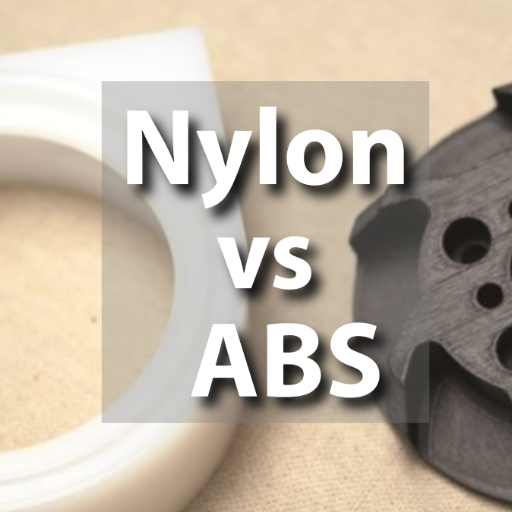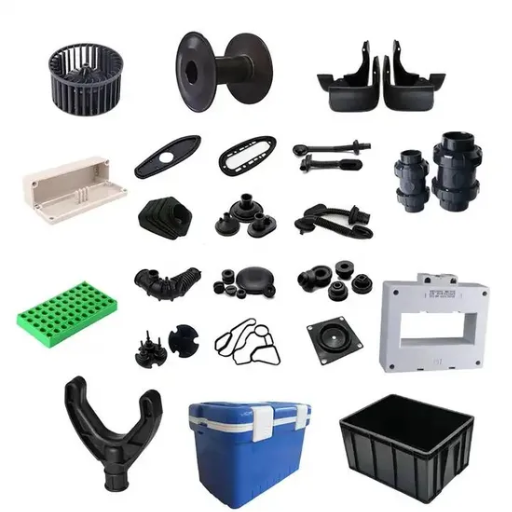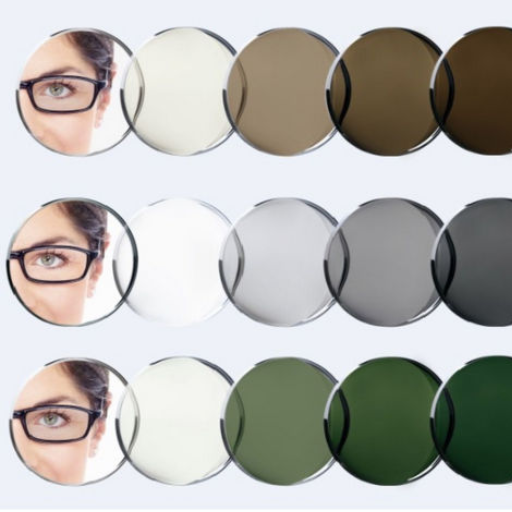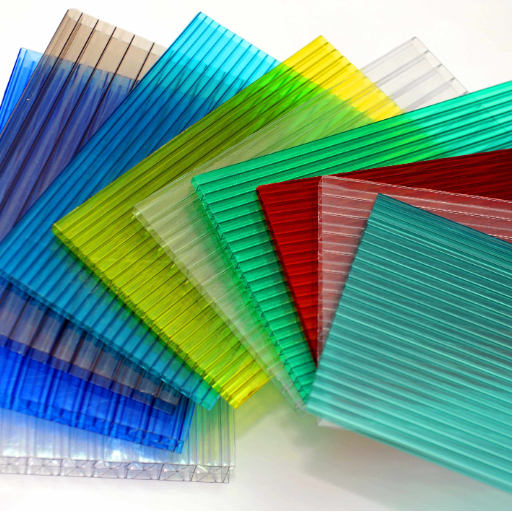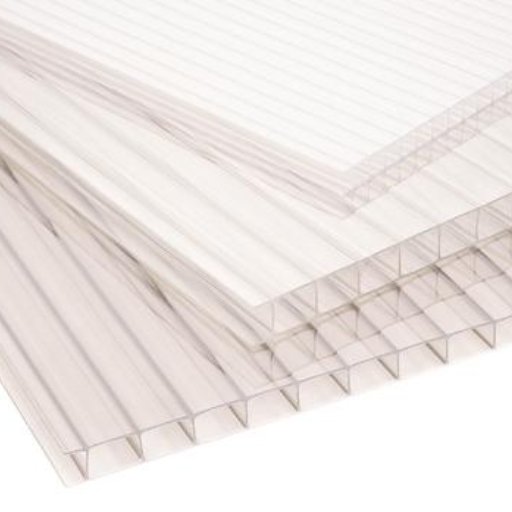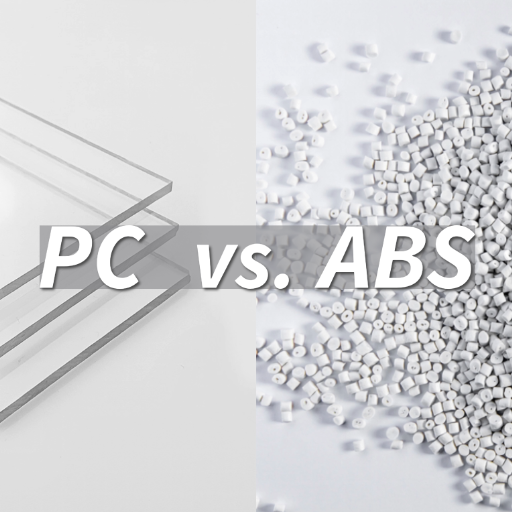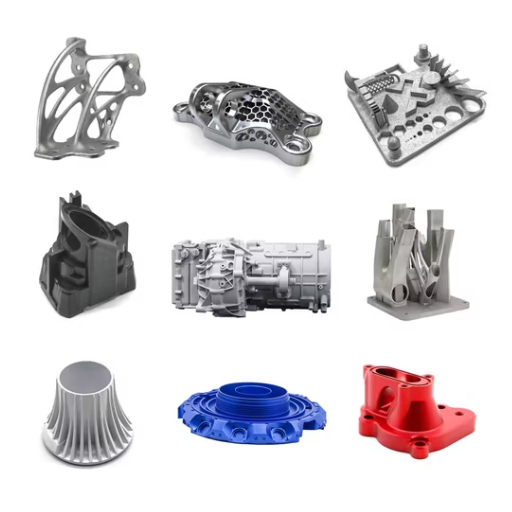Polyoxymethylene (POM) also known as Acetal and Polyacetal is a very useful engineering thermoplastic used in a wide range of applications that require high strength, low abrasion, and excellent engineering plastic. One of the most important properties that govern the functionality of POM plastic is the melting point, particularly its use in various downstream industrial processes like injection molding or extrusion. This article intends to discuss the melting point of POM plastic in depth; what is its importance, what factors affect it, and what are the thermodynamic aspects of melting in consideration.
To comprehensively address this concern, we will first set out to define the concept of a melting point. Then, we will expound on why the melting point of POM is so crucial. After that, we will analyze the thermal disparities that shape POM’s melting point such as its molecular weight, crystalline structure, and polymeric head groups POM can be added. Moreover, the article will discuss the impact of the thermal behavior of POM during manufacturing and propose models that would provide the maximized value and best performance POM can yield. By the end of this guide, readers will know how the melting point can exploit the engineering boundaries placed on POM plastic to use for more advanced and reliability-centered engineering applications.
What is POM Plastic and Why is it Popular?

Polyoxymethylene (POM) engineering is categorized under a thermoplastic known as acetal or polyacetal which is extremely high in their level of performance. Its excellent mechanical properties enable it to be utilized in industries such as the automotive industry, medical devices, and consumer electronics. In addition, polyoxymethylene boasts a top-tier capacity to withstand repeated stress along with wearing as well as precipitation, absorbing chemicals, and moisture. Therefore, it stands as the ideal material for precision parts and components that are durable and reliable. Its ease of machining further accounts for its popularity in industrial as well as consumer applications.
Properties of Polyoxymethylene (POM)
Polyoxymethylene (POM), or acetal, has superior mechanical properties and high dimensional stability. One salient feature is its high tensile strength, which allows it to withstand significant stress without deformation. POM has outstanding wear resistance and low friction coefficients, which make it effective in applications involving sliding or rotating parts. The polymer is also chemically resistant to oils, solvents, and fuels which makes it suitable for use in harsh environments.
Furthermore, POM has low moisture absorption which provides stability at different humidity levels and prevents swelling or degradation over periods of exposure. Coupled with low creep, high fatigue endurance, and excellent multidirectional stress relaxation, results in the retention of structural integrity under sustained loads for long periods. Its thermal stability provides a wide range of operating temperatures from -40°F to 212°F (-40°C to 100°C), making it widely applicable. In addition, its process and machining characteristics enable high precision in the manufacturing of complex geometries for industrial and consumer products, thus it is preferred POM is widely used in the automotive, electronics, and medical device manufacturing industries.
Applications of POM in Various Industries
POM, or polyoxyethylene, is extensively used across numerous industries due to its remarkable mechanical and chemical properties.
- Automotive Industry: POM is a prevalent material in the automotive sector, where its strength, wear resistance, and low friction qualities make it ideal for precision-engineered components. It is widely used for manufacturing gears, fuel system components, door lock systems, and seatbelt mechanisms. The material’s stability under temperature fluctuations ensures long-lasting performance in dynamic vehicle environments.
- Electronics and Electrical Industry: The excellent insulating properties and dimensional stability of POM make it indispensable for electronic and electrical applications. It is frequently employed in the production of connectors, switches, and housings for electronic devices, where precision and durability are critical.
- Medical Devices: POM’s biocompatibility, chemical resistance, and ease of sterilization position it as an essential material for medical devices. It is used in surgical instruments, inhalers, and drug delivery systems, ensuring safety and reliability in healthcare applications.
- Consumer Goods: The resistance to wear, aesthetic finish, and ability to hold tight tolerances make POM popular in producing zippers, fasteners, and high-performance sports equipment. Its low moisture absorption also contributes to products that remain consistent in various environmental conditions.
- Industrial Machinery: POM is used in conveyor belts, bearing cages, and pump components due to its excellent fatigue endurance and resistance to creep. These properties enable machinery components to sustain prolonged usage and operational stress without deformation.
Overall, POM’s versatility and robustness have cemented its role as a critical material for industries requiring high-performance engineering plastics.
Advantages and Disadvantages of POM Plastic
Advantages:
- High Mechanical Strength and Stiffness: POM exhibits excellent strength and rigidity, making it ideal for precision components that require dimensional stability.
- Low Friction and Wear Resistance: Its self-lubricating nature ensures the smooth operation of moving parts, reducing maintenance requirements and prolonging component life.
- Chemical Resistance: Resistant to fuels, oils, and most solvents, POM performs exceptionally well in chemically aggressive environments.
- Dimensional Stability: POM has low moisture absorption, which prevents swelling and distortion, maintaining its shape even in varying humidity or temperature conditions.
- Ease of Machining: POM can be easily machined to tight tolerances, allowing for the creation of complex geometries with precision.
Disadvantages:
- Low UV Resistance: Prolonged exposure to sunlight can degrade the material, necessitating UV stabilizers or protective coatings.
- Poor Impact Resistance at Low Temperatures: POM can become brittle and prone to cracking under high-impact stress in cold environments.
- Flammability: POM is inherently flammable and, An error occurred during generation. Please try again or contact support if it continues.
How Does the Melting Point Affect POM Plastic Injection?

In terms of temperature, a crucial factor in the manufacturing process of POM materials, which average from 175°C to 185°C, is the melting point. The weight and temperature directly impact the flow and fill of the mold, thus leading to the seamless and repeatable formation of the parts without any defects. On the other side, if the temperature is set too low, the material does not melt to the optimum level and can result in surface finishes that appear unfavorable or incomplete fills. However, setting the temperature too high may lead to degradation of the polymer which lowers mechanical strength and dimensional stability. To achieve the best possible injection results and maintain structural integrity, precision in temperature control is vital.
The Role of Melt Temperature in Injection Molding
Melt temperature continues to be one of the most important factors to consider when it comes to injection molding since it defines how fluid the polymer is and whether it will fill the mold properly. A low melt temperature means inadequate flow of the polymer which would result in incomplete fills, weld lines, and poor surface finish. On the other hand, a very high temperature would degrade the polymer’s molecular structure which would severely reduce mechanical properties and could even lead to warping and discoloration.
Effective control of the melt temperature is necessary to balance the viscosity of the material with the part quality that needs to be achieved. Proper calibration of the melt temperature yields the required range for specific materials resulting in uniform heat distribution with minimal defects on the perimeter. Moreover, controlling melt temperature can minimize cycle time and increase production efficiency by optimizing the balance between mold fill performance and material stability. The parameters set must be continuously validated to remain relevant to the material properties, part design, and production requirements.
Impact of Melting Point on Mold Temperature and Quality
The melting point of polymer materials has a direct relationship with the mold temperature that must be set for maximum part quality. High melting point materials will need high mold temperatures to ensure proper flow throughout the part and to avoid defects like incomplete fills or weld lines. In contrast, low melting point materials will require reduced thermal input which leads to lesser energy consumption while still ensuring proper part formation. The relationship between melting point and mold temperature is extremely important in preserving the molecular structure of the material, as polymers can be overly heated during processing which can greatly reduce the mechanical performance along with causing discoloration and warping.
The mold temperature should be set to ensure that the wow quality is achieved without undermining the efficiency of filling, cooling, or internal stress. For example, semi-crystalline polymers tend to require higher mold temperature settings such as above 120 degrees centigrade to properly crystallize for improved dimensional stability and strength. Amorphous polymers instead require much tighter temperature control to ward off warping or unsightly surface features. Balancing between the melting point and the mold temperature greatly enhances cycle time and reduces scrap rates which leads to higher overall part quality.
Adjusting Injection Temperatures for Optimal Results
Usability of flow, alignment of molecules, and last attributes of the part depend on the injection temperature. To achieve optimal results, the processing temperature needs to be in the range advised for the material. This range includes the barrel and the nozzle parts of the injection molding machine. Too much heating leads to material degradation and results in lower mechanical capability, color shifting, or release of dangerous gasses. Too little heat ends up in awful flow, cavities that are not filled, and weld lines that are easy to see.
Looking at the material data sheet is the first step for optimizing the injection temperature. It shows the distinct ranges of temperature for processing the material. Semi-crystalline polymers such as polypropylene and nylon tend to need higher temperatures because of their crystalline structure that ensures flow and crystallization. A range of temperature that is narrow is needed for amorphous polymers such as polycarbonate and ABS, otherwise, defects like rough surfaces and brittle finishes come out. Temperature uniformity has to be monitored as well. Barrel zone overheating leads to the melt viscosity being inconsistent, and local overheating leads to poor results. Furthermore, adding real-time temperature sensors into the injection molding processes helps control cycle variability and increases the repeatability of the parts. Dealing with changes is made easy through automated temperature control that reduces downtime and material waste. These methods end up ensuring the highest quality and accuracy of molded components.
Comparing Homopolymer and Copolymer POM: Which is Better?

Polyoxymethylene, or acetal as it is popularly known, can be classified into homopolymer and copolymer types. Delrin POM homopolymer, for instance, has high crystallinity which contributes to its mechanical strength, stiffness, and fatigue resistance. Furthermore, POM has a low coefficient of friction, which renders it useful in applications that depend on accuracy and smooth movement. The downside, however, is that homopolymers POM is highly susceptible to thermal degradation and chemical attack, especially in highly acidic or alkaline regions.
Copolymer POM tackles this downside by having lower crystallinity, which leads to greater resistance towards heat and chemicals. As a result, it is more stable when subjected to severe high temperature operations and intense chemicals to a degree. While it is slightly inferior in mechanical strength when compared to homopolymer POM, it does offer superior warpage resistance and outstanding dimensional stability.
Which POM type is selected depends greatly on the application’s needs. Most of the time, high mechanical performance and low friction dictates the use for homopolymer POM. However, copolymer POM is best used when there is elevated risk of thermal and chemical danger in the environment.
Differences in Mechanical Properties and Melting Points
One of the most significant differences between homopolymer and copolymer POM lies in their mechanical properties as well as their melting points. Homopolymer POM has higher tensile strength and stiffness due to its crystallinity. Its higher rigidity than POM makes it suitable for highly precision applications where great mechanical load capacity and durability are needed. Moreover, its copolymer’s counterpart aggravates the conditions of heat-resistive implementations. Its melting point increases to roughly 175°C.
Copolymers, on the other hand, tend to have a more balanced property profile. Its crystallinity is lower, resulting in lower tensile strength and rigidity compared to homopolymer POM, but improves toughness, particularly at low-temperature conditions. In addition, the melting point of copolymer POM is lower than that of homopolymer, approximately 162-165°C. This lower melting point is offset by its greater thermal-oxidative stability, and better performance in alkaline, acidic environments, thus making it the preferred variant in chemically aggressive or thermally demanding implementations.
Advantages of High Crystallinity in Homopolymer POM
History of the 20th century has shown that homopolymer POM has superior qualities than its copolymer counterpart. First, the increased homo crystallinity and high crystallinity enhance tensile strength and improve rigidity which increases the ability of the material to withstand other intensive processes. It is very helpful for providing structures that may face repeated loads or hefty mechanical work.
Hetero crystallinity with polymerization also raises the melting point to about 175°C, this enables homopolymer POM to remain in forbearance while thermally loaded than as compared to copolymer POM. Thus, it is ideal for molted structures on account of being heated for extended durations.
Lastly, homopolymer POM is excellent in creep resistance and repression deformation while sustaining load over a long period. It makes it especially strong fighter against static loads. It also has a close tolerance dimensional stability. Coupled with other attributes of high strength and stiff, these define its application in gears, bearings, and other precision-engineered components.
Applications of Copolymer POM in Engineering Plastics
Copolimer POM, or Acetal Copolymer as it is often called, is a type of engivneering plastic that is highly valued for its precision and enables the creation of durable products. It has a low moisture absorption rate, a high resistance to fatigue and impacts, and excellent dimensional stability which makes it ideal for use in components within settings with variable environmental conditions.
In the automotive industry, copolimer POM is primarily used for making interior and exterior trims, clips, fasteners, fuel system components and several other intricate parts. The mechanical stress that the parts endure alongside POM’s chemical resistance enable utmost reliability and performance. The same characteristics make copolimer POM widely used in the electrical and electronic industries for connectors, switches, and housings.
Copolymer POM is also used to produce gears, bushings, and conveyor belt parts in industrial machinery because of its self-lubricating characteristics along with a low coefficient of friction. In medicine, it is utilized in surgical tools and structural components of prosthetics due to its biocompatibility and high wear resistance. Ultimately, copolymer POM is used extensively across several branches of engineering because it possesses an exceptional blend of thermal stability, mechanical strength, and resistance to chemicals and environmental conditions.
What are the Processing Techniques for POM Plastic?

The primary processing techniques for POM plastic include injection molding, extrusion, and machining.
- Injection Molding: This is the most common method for producing POM components due to its efficiency and precision, particularly for high-volume production. The process involves melting POM resin at controlled temperatures, typically between 190°C and 230°C, and injecting it into molds under high pressure. Proper mold design and venting are crucial to avoid defects such as sink marks or voids.
- Extrusion: POM can be extruded to create continuous profiles such as rods, sheets, and pipes. The extrusion process also requires careful control of processing temperatures and cooling rates to maintain dimensional stability and uniformity in the final product.
- Machining: For applications requiring high precision, POM plastic can be machined into specific shapes using techniques such as turning, milling, and drilling. This is especially useful for producing prototypes or low-volume custom parts.
Controlled drying of POM resin before processing is essential to minimize moisture-related issues like voids or bubbles. Additionally, proper annealing post-processing can alleviate internal stresses, ensuring optimal mechanical performance. These techniques make POM a versatile material for manufacturing components across various industries.
Injection Molding Techniques for POM Materials
Injection molding of POM (Polyoxymethylene) requires precise process control to leverage its excellent mechanical and thermal properties. The key factors to consider include:
- Processing Temperature: POM materials typically have a processing temperature range of 190°C to 230°C. Excessive heat should be avoided as POM is prone to thermal degradation, which releases formaldehyde gases. A controlled and uniform melt temperature is essential for high-quality results.
- Mold Design: Proper venting and balanced flow channels in the mold are critical to prevent defects like voids or weld lines. Sharp corners should be avoided to reduce stress concentrations, and provisions for uniform cooling must be made to maintain part consistency and dimensional accuracy.
- Injection Pressure: Maintaining moderate injection pressure is crucial to achieve optimal filling without compromising surface quality. Overly high pressures may result in flashing or excessive stresses in the molded parts.
- Cooling and Ejection: POM exhibits low thermal conductivity, necessitating efficient cooling systems to reduce cycle time. Ejector pins should be carefully positioned to prevent part deformation during removal.
- Drying and Moisture Control: To avoid moisture-related defects such as bubbles or burn marks, POM resins must be dried to achieve a moisture content of less than 0.2% prior to processing.
These techniques, when properly implemented, ensure that POM exhibits its full potential in applications requiring durability, lubrication, and dimensional stability. Mastery of these parameters is vital for producing components with superior performance and reliability.
Understanding the Processing Guide for POM Plastics
To successfully process POM (polyoxyethylene) plastics, it is essential to manage key variables to optimize performance and address common processing challenges. Below is a concise summary, combining insights from leading resources:
- Temperature Control: POM processing requires precise temperature management. Optimal barrel temperatures typically range between 190°C and 230°C. The mold temperature should be maintained between 80°C and 120°C to ensure dimensional stability and minimize internal stresses.
- Injection Parameters: Proper settings for injection speed and pressure are vital to achieve uniform material flow and avoid defects. Moderate injection speeds reduce the risk of gate wear and burning while maintaining an injection pressure within 70-120 MPa ensures proper cavity filling without flash.
- Drying Recommendations: POM must be sufficiently dried before molding to reduce moisture-related issues. Drying the resin at 80°C for 3-4 hours is standard to reach the recommended moisture content below 0.2%.
- Cooling and Ejection: Efficient cooling systems are crucial given POM’s low thermal conductivity. Cooling time must be optimized to balance productivity and part quality. Ejector mechanisms should apply even forces to prevent deformation, especially for parts with intricate designs.
- Troubleshooting Common Defects:
- Warping can be minimized by maintaining uniform mold temperatures and balanced flow channels.
- Voids or Burn Marks often result from insufficient drying or trapped gases, which necessitate adjustments to venting and drying parameters.
- Sink Marks may occur due to high part thickness and insufficient holding pressure; increasing cooling time and controlling packing pressure can mitigate this issue.
By adhering to these guidelines, manufacturers can maximize the mechanical and functional properties of POM components, ensuring high-quality outputs that meet stringent application demands.
Challenges and Solutions in Processing POM
As with other engineering plastics, there are some challenges with the processing of POM, but they can be dealt with by using some of the important strategies. I set the mold temperature and flow channel designs to eliminate issues concerning warping. To deal with voids or burn marks, I dry the resin to the recommended amounts of moisture and vent the resin to get rid of the trapped gas. Sink marks are controlled by modifying wall thickness in the design of parts, lengthening the cooling period, and controlling packing pressure for molding. I employ these strategies in a systematic manner which enables me to produce POM components that have minimal defects.
How Do Temperature Ranges Affect the Dimensional Stability of POM?

Due to the thermal expanse characteristics of POM, the temperature ranges greatly affect the dimensional stability. POM exhibits dimensional stability within its operating temperature range which is -40 degrees Celsius and 120 degrees Celsius. Any temperature above it may result in thermal degradation, which is defined as shrinkage, warping, or loss of mechanical strength. Likewise, very low temperatures may increase certain dosages of brittleness in it, which can influence its performance under load. It is necessary, however, that to maintain optimal dimensional stability, the material is not subjected to thermal limits during expansion or contraction in the design stage.
Maintaining Good Dimensional Stability in POM
POM (Polyoxymethylene) requires careful attention to its thermal behavior and operating conditions during design and manufacturing to achieve proper dimensional stability. Ensure that the material is used within its operational limits of -40°C and 120°C because if the material is overheated, it will degrade, shrink, warp, and possibly fail mechanically. Provisions for expansion and contraction should also be incorporated into the design. Environment control is particularly important; avoid rapid temperature changes and ensure proper processing conditions for cooling during molding. Using POM-reinforced grades, or blends with other additives, may also improve stability under changing mechanical and thermal conditions. All of these improve POM’s performance while maintaining the required dimensional stability of the material.
Effect of Low Water Absorption on Stability
Reduced water absorption has proven to bolster the material’s stability, particularly in places where moisture is present. Materials with a low water absorption rate are less prone to wobbling or distortion and therefore experience very little dimensional changes. This feature is important to the structural maintenance of the material over time. In addition, reduced water absorption means a lower level of degradation, such as cracking or even the weakening of a structure during cyclic freeze-thaw conditions or extensive water submersion. This characteristic is particularly beneficial in construction, engineering, and polymer-based products, which should remain robust in a myriad of environmental conditions. Furthermore, reduced thermal performance is also enhanced as low water absorption inhibits the entry of moisture which may destroy the insulating feature. In the end, the use of materials with low water absorption rate optimized increases the longevity of the materials while simultaneously decreasing the costs of maintenance.
Ensuring High Strength and Impact Resistance
To maintain great strength and resistance to impacts on the materials, a few significant aspects need to be regarded during the choice and the designing steps. As an example, heat-tolerant and high-strength steel, as well as titanium alloys, are popular picks owing to their exceptional mechanical properties. Likewise, engineering thermoplastics such as polycarbonate and ABS excel in impact resistance within polymer applications. Furthermore, other treatment and processing methods like annealing or quenching can greatly increase a material’s toughness through microstructural refinement. Finally, fiber reinforcements as found in advanced composite materials further improve impact resistance through the redistribution of stress loads across the fibers which decreases the chances of failure. Products like these that are expected to perform under challenging conditions achieve their maximum effectiveness when advanced manufacturing techniques are coupled with careful material choice.
References
Frequently Asked Questions (FAQ)
Q: What are the key properties of POM plastic?
A: POM plastic, also known as Polyoxymethylene, is a thermoplastic with high mechanical and chemical properties. It is characterized by its high density and high crystallinity, offering low friction, abrasion resistance, and excellent chemical resistance. These properties make it an essential material for a wide range of applications, particularly where high hardness and heat resistance are required.
Q: How is POM plastic classified?
A: POM plastic is typically classified into two main grades: POM-H (homopolymer) and POM-C (copolymer). The homopolymer is produced through the polymerization of formaldehyde and has a higher density and crystallinity, while the copolymer offers improved thermal stability and chemical resistance.
Q: What is the melting point of POM plastic?
A: POM is a crystalline plastic with an obvious melting point, typically around 175°C to 182°C for POM-H. This high melting point results in different processing requirements and is crucial for applications that require parts to maintain structural integrity under heat.
Q: What are the advantages of using POM in injection molding?
A: POM is used in injection molding due to its excellent mechanical properties, such as high hardness and abrasion resistance. An injection molding machine can effectively process this semi-crystalline plastic, producing parts with precise dimensions and excellent surface finishes. The material’s low friction and good heat resistance make it suitable for producing high-performance components.
Q: What are the potential issues related to POM degradation?
A: POM degradation can occur if the plastic material is exposed to high temperatures or acidic conditions during processing or use. Overheating in the injection molding machine can lead to the release of formaldehyde, a byproduct of POM degradation, which may affect the mechanical and chemical properties of the finished part. Proper control of barrel temperature and processing conditions is necessary to minimize degradation risks.
Q: What are the common applications of POM plastic?
A: POM is used to produce components that require high precision and structural integrity, such as gears, bearings, and fasteners. Its high density and chemical resistance make it suitable for automotive, electrical, and consumer goods industries. POM’s properties also make it ideal for producing parts in contact with food and water.
Q: How does wall thickness affect POM injection molded parts?
A: In POM injection molding, wall thickness can significantly influence the cooling rate, mechanical properties, and dimensional stability of the final part. Thicker walls may require longer cooling times and can result in warping or internal stresses if not managed correctly. Optimal wall thickness is crucial to achieve the desired mechanical performance and minimize defects.
Q: What role does barrel temperature play in POM processing?
A: Barrel temperature is critical in POM processing as it affects the polymer’s viscosity and flow properties. Maintaining the correct temperature ensures that the polymer melts uniformly, reducing the risk of defects such as voids or incomplete filling in the injection molded part. Proper temperature control is essential to prevent POM degradation and achieve high-quality results.
Q: Why is POM considered a semi-crystalline plastic material?
A: POM is considered a semi-crystalline plastic material because it exhibits both crystalline and amorphous regions within its structure. This unique molecular arrangement results in high density and crystallinity, contributing to its excellent mechanical and chemical properties, such as abrasion resistance and low friction, making it suitable for various demanding applications.







